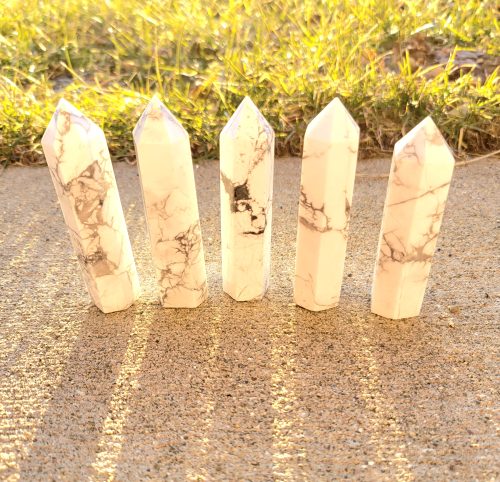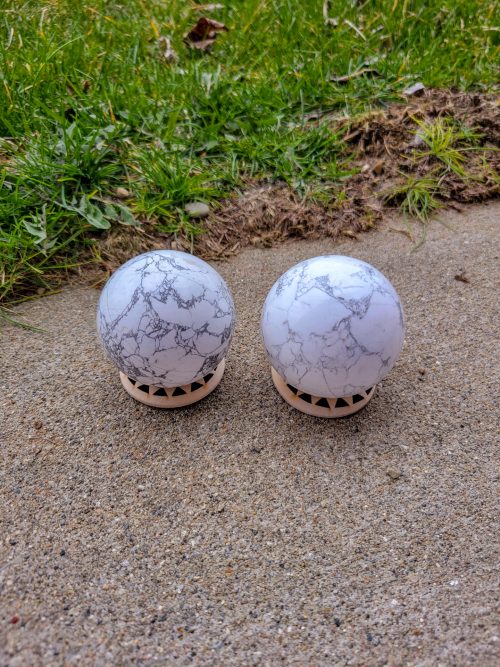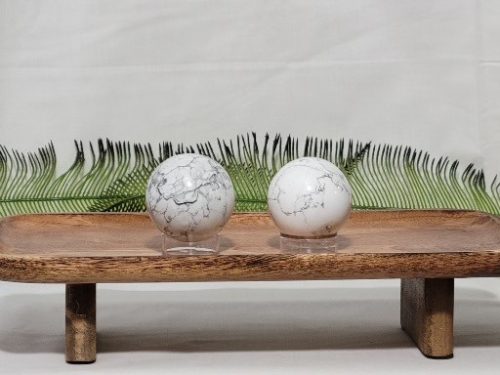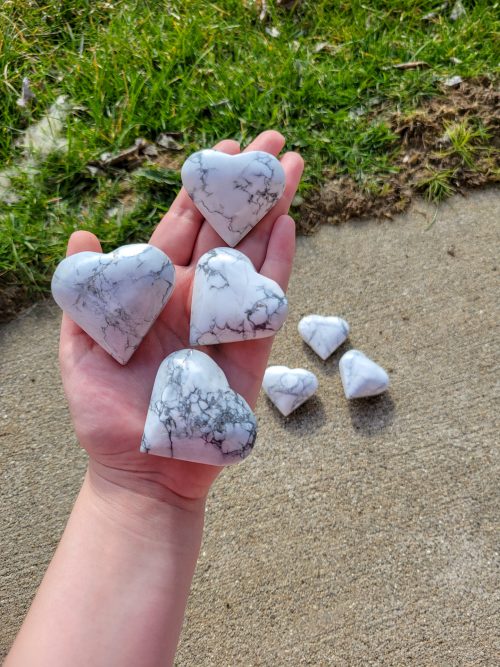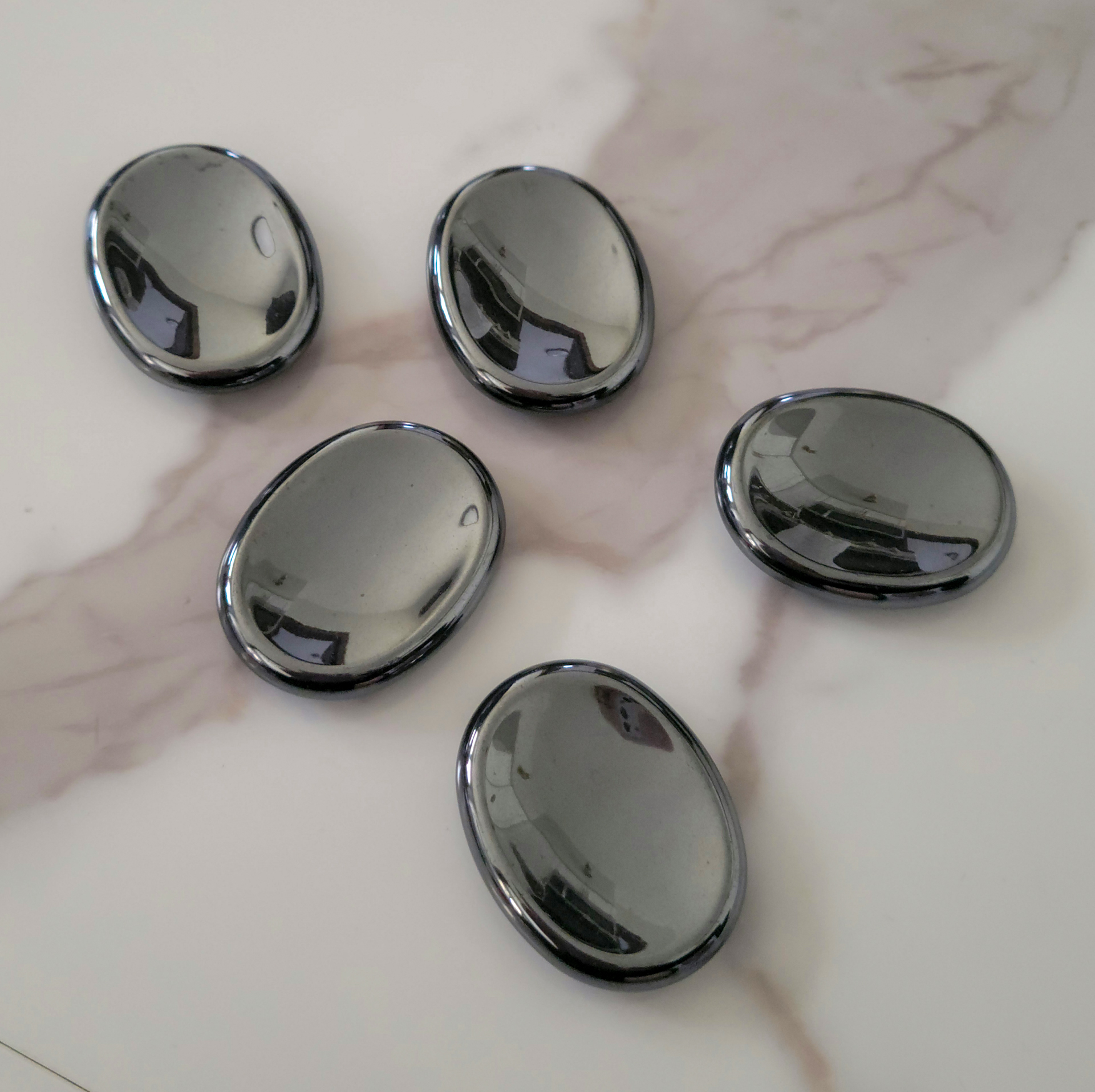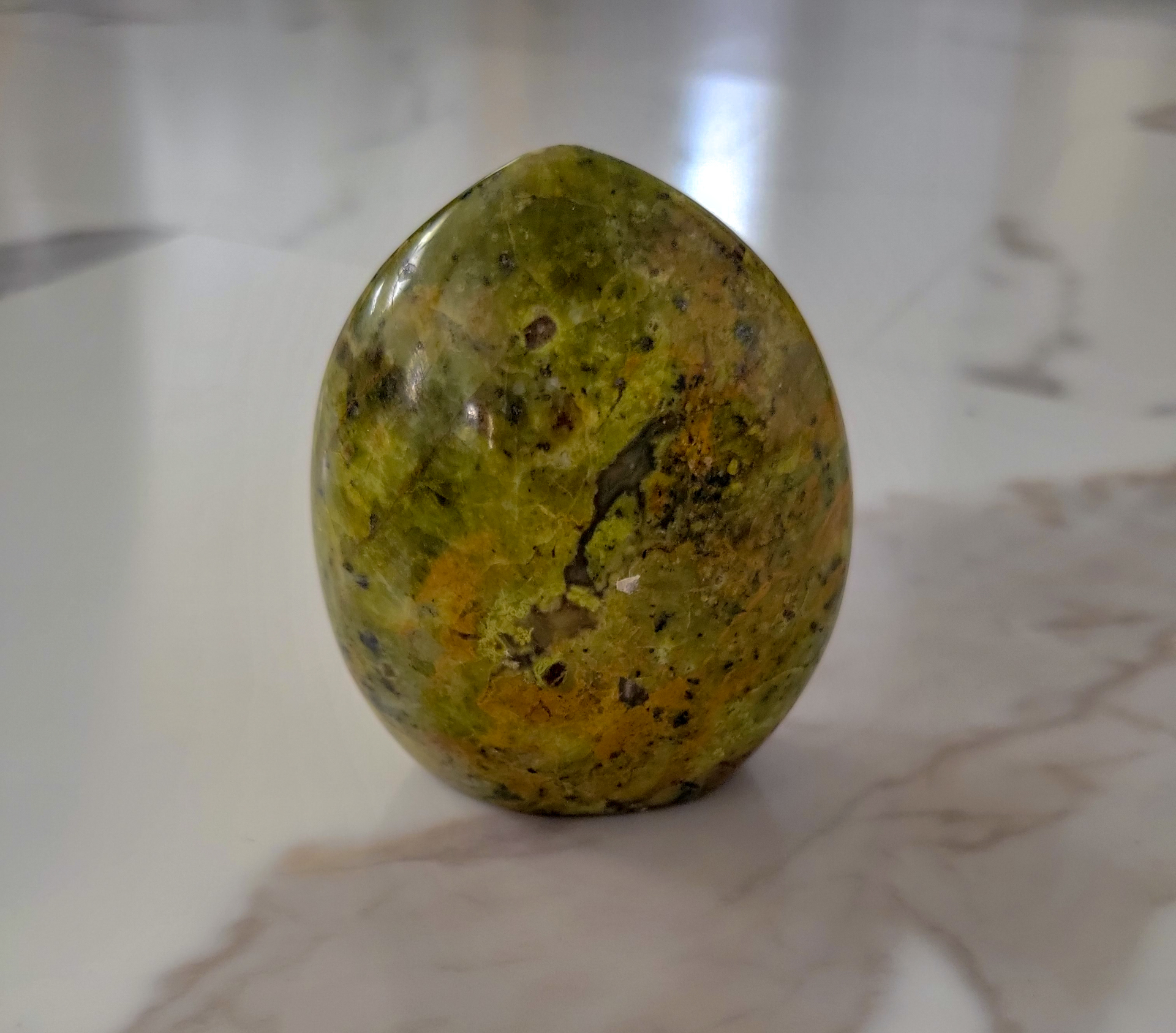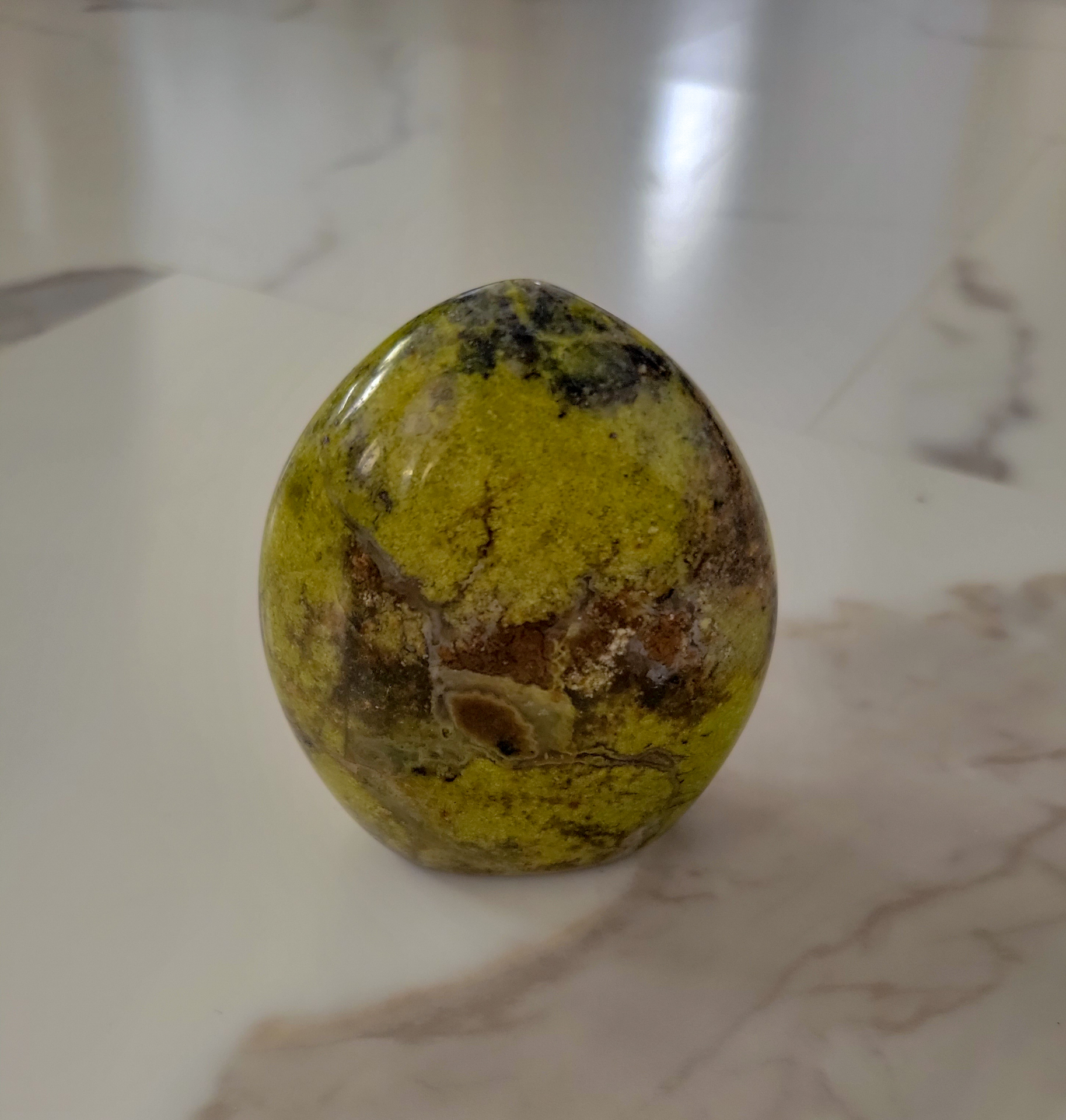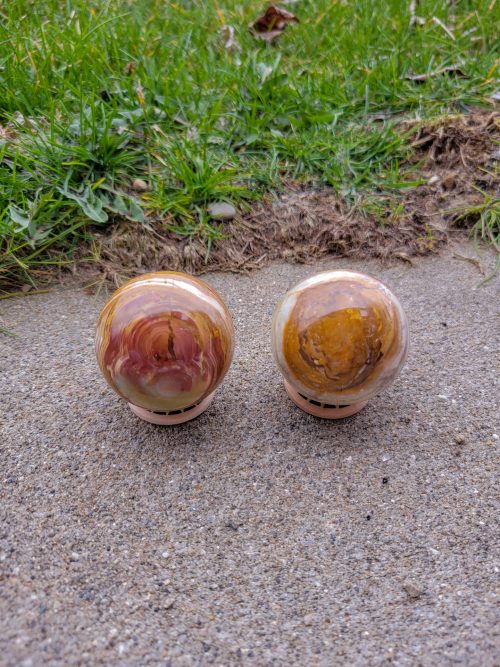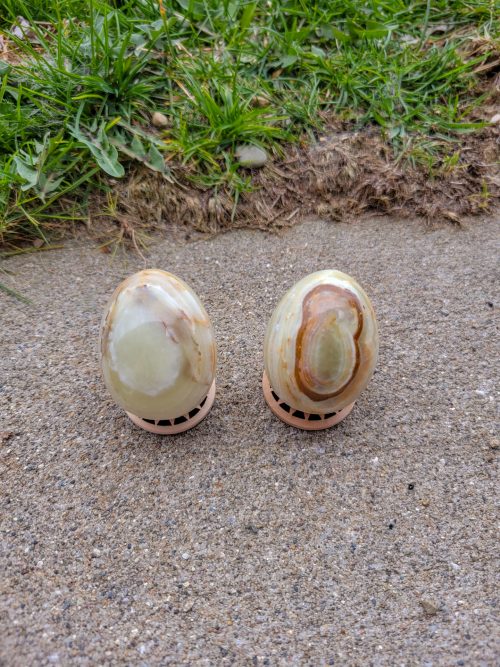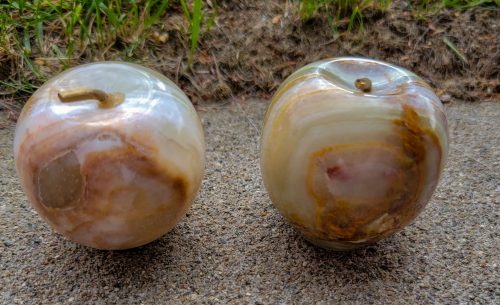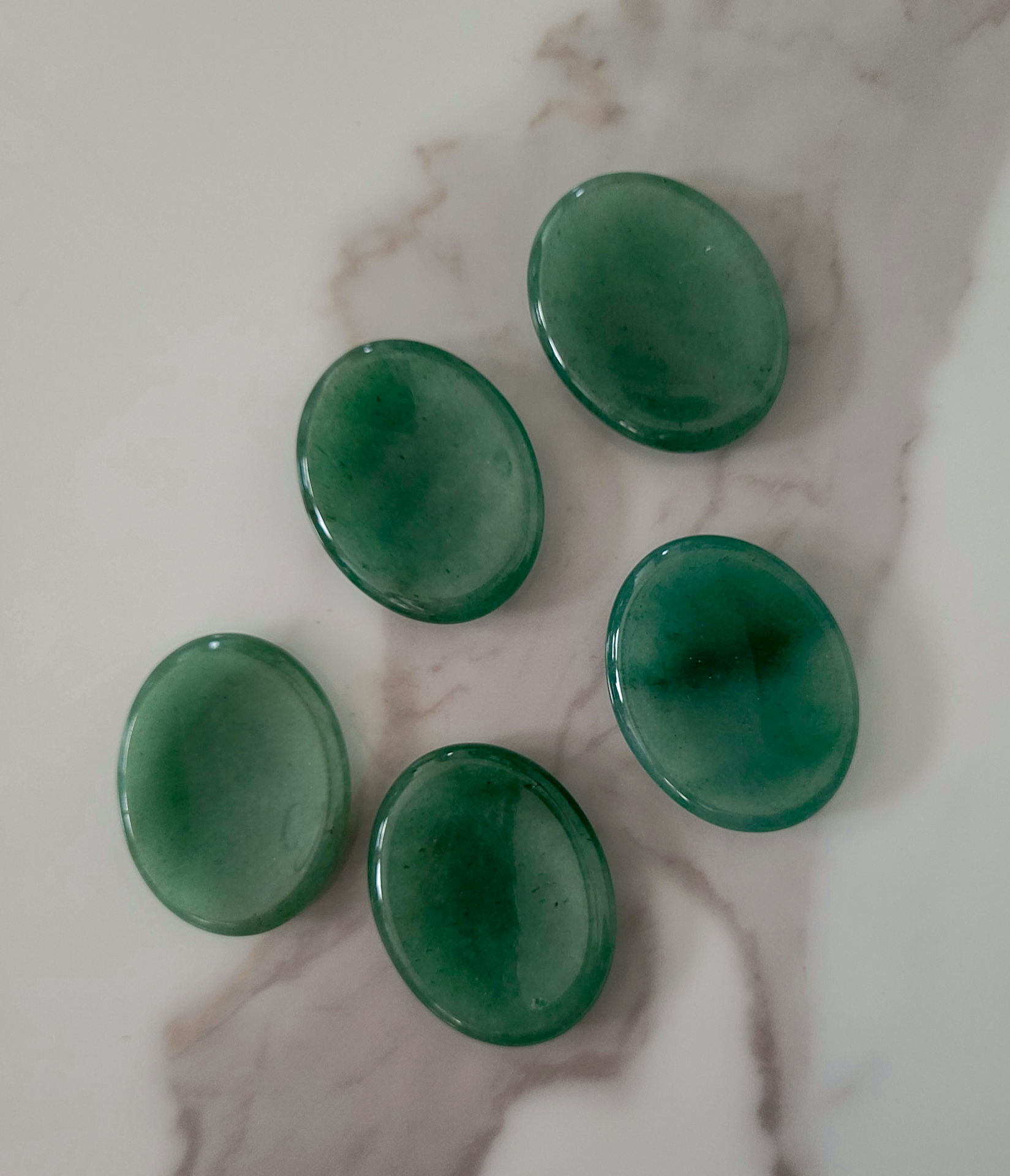-
8cm - 9cm Tall Howlite was originally discovered in Canada by a geologist named Henry How which is where its name comes from. Howlite is formed in evaporate deposits with other borate and evaporate minerals. The outside of the mineral is not pleasant to the eye and is said to look like a head of cauliflower. However, when that is taken off, this beautiful mineral is found inside! This mineral is mainly found in Canada and the USA. ***Due to natural variations in stones, the appearance will vary***
-
60mm Howlite was originally discovered in Canada by a geologist named Henry How which is where its name comes from. Howlite is formed in evaporate deposits with other borate and evaporate minerals. The outside of the mineral is not pleasant to the eye and is said to look like a head of cauliflower. However, when that is taken off, this beautiful mineral is found inside! This mineral is mainly found in Canada and the USA. ***Due to natural variations in stones, the appearance will vary***
-
40-50mm Howlite was originally discovered in Canada by a geologist named Henry How which is where its name comes from. Howlite is formed in evaporate deposits with other borate and evaporate minerals. The outside of the mineral is not pleasant to the eye and is said to look like a head of cauliflower. However, when that is taken off, this beautiful mineral is found inside! This mineral is mainly found in Canada and the USA. ***Due to natural variations in stones, the appearance will vary***
-
4.5cm Wide Howlite was originally discovered in Canada by a geologist named Henry How which is where its name comes from. Howlite is formed in evaporate deposits with other borate and evaporate minerals. The outside of the mineral is not pleasant to the eye and is said to look like a head of cauliflower. However, when that is taken off, this beautiful mineral is found inside! This mineral is mainly found in Canada and the USA. ***Due to natural variations in stones, the appearance will vary***
-
5cm Wide Howlite was originally discovered in Canada by a geologist named Henry How which is where its name comes from. Howlite is formed in evaporate deposits with other borate and evaporate minerals. The outside of the mineral is not pleasant to the eye and is said to look like a head of cauliflower. However, when that is taken off, this beautiful mineral is found inside! This mineral is mainly found in Canada and the USA. ***Due to natural variations in stones, the appearance will vary***
-
4 x 1 x 5cm Hematite is a heavy and relatively hard oxide mineral. It is made of ferric oxide. It constitutes the most important iron ore because of its high iron content (approximately 70 percent) and its abundance. Its name comes from its Greek meaning, "blood". Hematite is unusual in that its macrocrystalline forms are incongruent, while its particulate forms are congruent. When it is formed congruently, it has a red color to it and when formed incongruently, it is a silvery-black color. ***Due to natural variations in stones, the appearance will vary***
-
8 x 3 x 8cm Green Opal is a type of common opal that ranges in color from a pale to dark green. It's one of the easiest Opals to find and can be found in 6 continents. Most of these specimens have come from Australia, Brazil, USA, Mexico, and Peru. ***Due to natural variations in stones, the appearance will vary***
-
9 x 3 x 10cm Green Opal is a type of common opal that ranges in color from a pale to dark green. It's one of the easiest Opals to find and can be found in 6 continents. Most of these specimens have come from Australia, Brazil, USA, Mexico, and Peru. ***Due to natural variations in stones, the appearance will vary***
-
45mm Onyx is a banded variety of the oxide mineral chalcedony. Onyx and Agate are similar in that they are both varieties of layered chalcedony. The difference between the two is that agate has curved banding and onyx has parallel banding. The colors of the banding range from virtually every color possibility. Green Onyx is mainly found in Brazil, India, Madagascar, Mexico, Peru, and USA ***Due to natural variations in stones, appearance will vary***
-
5cm Tall Onyx is a banded variety of the oxide mineral chalcedony. Onyx and Agate are similar in that they are both varieties of layered chalcedony. The difference between the two is that agate has curved banding and onyx has parallel banding. The colors of the banding range from virtually every color possibility. Green Onyx is mainly found in Brazil, India, Madagascar, Mexico, Peru, and USA ***Due to natural variations in stones, appearance will vary***
-
5cm Tall Onyx is a banded variety of the oxide mineral chalcedony. Onyx and Agate are similar in that they are both varieties of layered chalcedony. The difference between the two is that agate has curved banding and onyx has parallel banding. The colors of the banding range from virtually every color possibility. Green Onyx is mainly found in Brazil, India, Madagascar, Mexico, Peru, and USA ***Due to natural variations in stones, appearance will vary***
-
4 x 1 x 5cm Aventurine is a part of the quartz family. This mineral ranges many colors; pink being the most rare of all the colors. This mineral is composed of quartz with many micro inclusions (such as mica) to create its beautiful appearance. The pink tone in it comes from the hematite in the mineral. This mineral is most commonly found in India but can also be found in Brazil, Austria, Canada, and Tanzania. ***Due to natural variations in stones, the appearance will vary***

